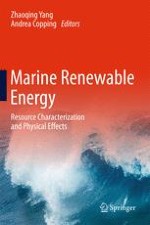2017 | OriginalPaper | Chapter
Marine Hydrokinetic Energy in the Gulf Stream Off North Carolina: An Assessment Using Observations and Ocean Circulation Models
Authors : Caroline F. Lowcher, Michael Muglia, John M. Bane, Ruoying He, Yanlin Gong, Sara M. Haines
Published in: Marine Renewable Energy
Publisher: Springer International Publishing
Activate our intelligent search to find suitable subject content or patents.
Select sections of text to find matching patents with Artificial Intelligence. powered by
Select sections of text to find additional relevant content using AI-assisted search. powered by
